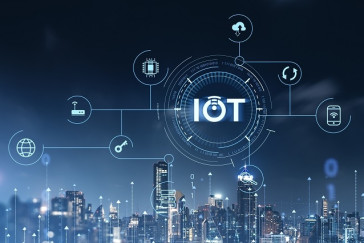Digital Art's Evolution: Technology's Impact on Creativity

The landscape of art has undergone a radical transformation in the past few decades, primarily driven by advancements in technology. As we enter 2024, the rise of digital art trends is evident, reshaping how artists create, share, and sell their work. From virtual galleries to AI art creation, technology is not just a tool but a canvas that invites artists to explore new dimensions of creativity. In this blog, we will delve into how technology is revolutionizing the creative world, examine current digital art trends, and discuss the implications for artists, collectors, and the art industry at large.
Understanding Digital Art
Digital art encompasses various forms of creative expression that utilize digital technology as an essential part of the creation or presentation process. This can range from digital painting and illustration to 3D modelling and animation. Unlike traditional art forms that rely on physical mediums like paint or clay, digital art thrives in a virtual realm, offering artists unprecedented flexibility and innovative possibilities.
Historical Context
The roots of digital art can be traced back to the 1960s when artists began experimenting with computer-generated graphics. However, it wasn't until the 1990s and 2000s, with the advent of personal computers and graphic design software, that digital art began to flourish. Today, with the integration of technology into our daily lives, digital art has become more accessible than ever, opening the doors for a diverse array of artists to showcase their talents.
The Role of Technology in Art
Enhanced Tools for Creation
One of the most significant benefits of technology in art is the emergence of sophisticated tools that enhance the creative process. Artists can now utilize software such as Adobe Photoshop, Procreate, and Blender to create intricate designs, animations, and illustrations. These tools allow for a level of precision and flexibility that traditional mediums simply cannot provide.
Furthermore, advancements in hardware-such as graphic tablets and styluses-have made it easier for artists to replicate the natural feel of drawing and painting on a digital platform. As a result, artists can experiment with various styles, textures, and effects without the constraints of physical materials.
AI Art Creation
In recent years, artificial intelligence (AI) has made significant inroads in the art world. AI art creation tools, such as DALL-E and DeepArt, allow users to generate images based on textual prompts or transform existing photos into stylized works of art. This technology is not just a novelty; it is changing the way artists approach their work.
For instance, AI can serve as a collaborative partner, generating ideas or providing inspiration that artists can build upon. It opens up new avenues for creativity, allowing for the fusion of human ingenuity with machine-generated possibilities. As we navigate through 2024, we are likely to see an increased presence of AI-generated art, with artists integrating these tools into their workflows to enhance their creative output.
Digital Art Trends in 2024

As we look at the digital art trends shaping 2024, several themes emerge that reflect the evolving relationship between technology and creativity.
1. Augmented Reality (AR) and Virtual Reality (VR)
AR and VR technologies are making significant strides in the art world. Artists are increasingly creating immersive experiences that allow viewers to engage with their work more interactively. Virtual galleries are emerging as popular platforms where artists can showcase their work, enabling viewers to explore art from the comfort of their homes.
In 2024, we can expect to see more artists experimenting with these technologies to create interactive installations and exhibitions. For example, AR apps can overlay digital art onto real-world environments, allowing users to experience art in a new context. Meanwhile, VR art galleries can transport users to entirely different worlds, immersing them in the artist's vision.
2. The Rise of NFTs
Non-fungible tokens (NFTs) have taken the art world by storm, offering a new way for artists to monetize their digital creations. NFTs are unique digital assets that represent ownership of a specific piece of art, secured on the blockchain. In 2024, the NFT market continues to evolve, with more artists exploring this technology as a means of securing their work's provenance and authenticity.
NFTs have democratized the art market, allowing emerging artists to gain visibility and collectors to purchase art without traditional intermediaries. As digital art trends progress, we can expect to see more innovative uses of NFTs, including interactive and dynamic artworks that can change based on the owner's preferences.
3. Collaborations Across Disciplines
The intersection of art and technology is leading to exciting collaborations across disciplines. Artists are partnering with technologists, designers, and engineers to create hybrid works that blend visual art with elements of coding, robotics, and sound. This trend fosters a collaborative spirit, encouraging artists to push the boundaries of their creativity.
In 2024, we are likely to witness more of these interdisciplinary projects, with artists exploring the synergies between their work and emerging technologies. Whether it's creating immersive soundscapes for installations or designing interactive experiences that respond to viewer engagement, these collaborations promise to redefine the future of art.
4. Community and Online Platforms
The rise of modern art platforms has transformed how artists connect with audiences. Social media platforms like Instagram, TikTok, and Pinterest have become essential tools for artists to showcase their work, build communities, and engage with collectors. Additionally, dedicated platforms like ArtStation and Behance allow artists to share their portfolios and network with other creatives.
As we move through 2024, we can expect to see a continued emphasis on building online communities. Artists are leveraging these platforms to share their processes, offer tutorials, and connect with their audience in meaningful ways. This sense of community not only fosters collaboration but also supports emerging artists in gaining exposure and recognition.
5. Eco-Friendly Practices
With increasing awareness of environmental issues, many artists are exploring eco-friendly practices in their work. Digital art inherently requires fewer physical materials than traditional art forms, but artists are also seeking ways to reduce their carbon footprint through sustainable art.
In 2024, we can expect to see a rise in eco-conscious art initiatives, with artists utilizing renewable energy sources, eco-friendly software, and online exhibitions to minimize waste. This trend not only aligns with global sustainability efforts but also resonates with audiences who value environmental responsibility in art.
The Impact of Virtual Galleries
Virtual galleries are transforming how art is presented and experienced. Unlike traditional galleries, which often have physical limitations, virtual galleries can host unlimited works, providing artists with a platform to reach a global audience.
Accessibility
One of the most significant advantages of virtual galleries is accessibility. They allow art enthusiasts from all walks of life to explore exhibitions without geographical barriers. This democratization of access means that emerging artists can showcase their work alongside established names, levelling the playing field and fostering a more inclusive art community.
Innovation in Presentation
Virtual galleries offer innovative presentation formats that enhance the viewer's experience. Artists can incorporate multimedia elements-such as sound, video, and interactive components-into their exhibitions, creating immersive environments that engage the audience in new ways.
In 2024, we can anticipate an increase in the sophistication of virtual galleries, with artists utilizing cutting-edge technology to create visually stunning and interactive exhibitions that captivate viewers.
The Future of Digital Art
As we look ahead, the future of digital art appears bright. The integration of technology in art will continue to evolve, offering artists new tools, platforms, and opportunities for expression. Here are a few predictions for the future of digital art:
1. Greater Adoption of AI
As AI technology advances, we can expect artists to embrace it even more. From generating new ideas to automating tedious tasks, AI will become an integral part of the creative process. Artists will likely explore new ways to collaborate with AI, resulting in innovative and unexpected outcomes.
2. Continued Growth of NFTs
The NFT market is expected to grow and evolve, with artists finding new ways to leverage this technology for their benefit. As more collectors recognize the value of digital art and the importance of ownership, we will likely see a diversification of NFT offerings, including collaborations and interactive pieces.
3. Expanded Educational Resources
As digital art becomes increasingly mainstream, educational institutions will likely expand their offerings in digital art programs. Online courses, workshops, and tutorials will become more prevalent, helping aspiring artists develop their skills and navigate the digital art landscape.
4. Integration of Mixed Media
The future of digital art will likely see more integration of mixed media, where artists blend traditional techniques with digital tools. This fusion allows for new creative expressions and encourages artists to explore their unique styles.
You may also like to read: Exploring the Influence of Street Art on Urban Culture
Conclusion
The rise of digital art is a testament to how technology is transforming the creative world. As we move into 2024, the trends we are witnessing-such as the rise of virtual galleries, the integration of AI in art creation, and the emergence of modern art platforms-are reshaping how artists create, share, and sell their work.
As technology continues to evolve, it will undoubtedly play an even more significant role in the art world, opening doors to new forms of expression and opportunities for artists. Whether you are an artist, collector, or simply an art enthusiast, it's an exciting time to explore the boundless possibilities that digital art presents. Embracing this evolution allows us to appreciate and celebrate the dynamic relationship between art and technology, paving the way for a future where creativity knows no bounds.
This content was created by AI





